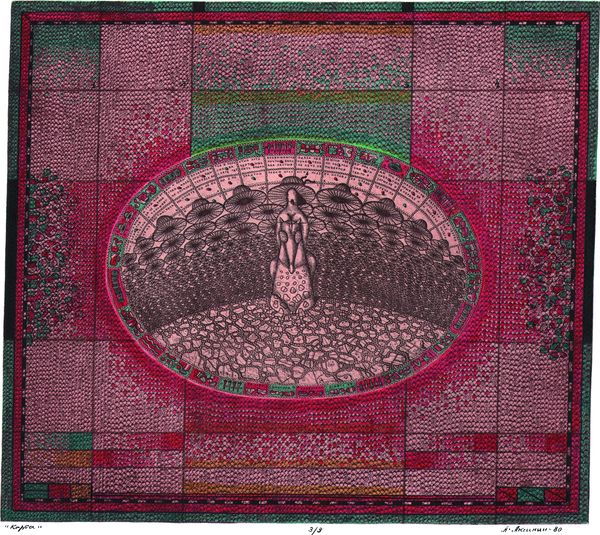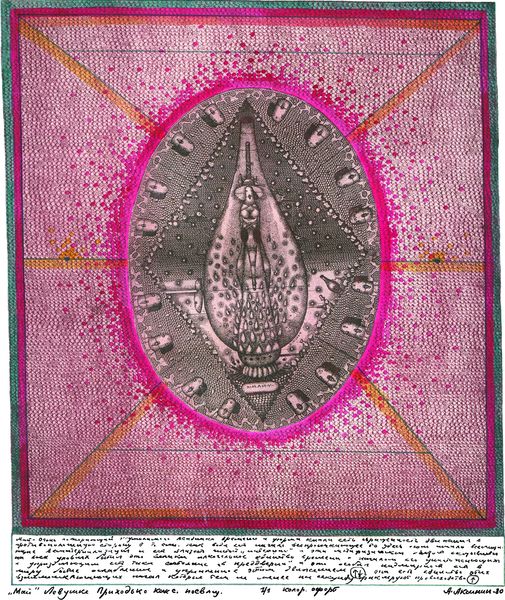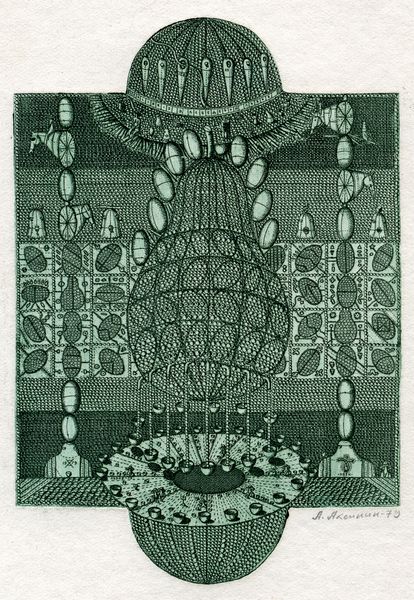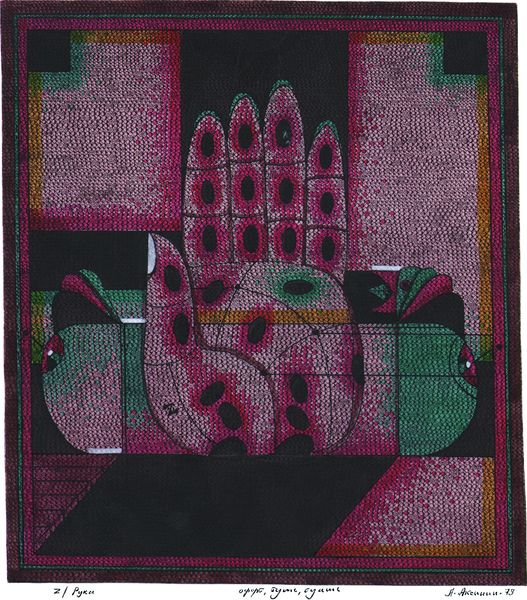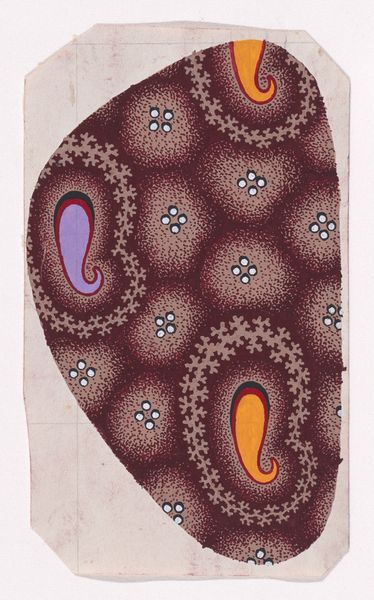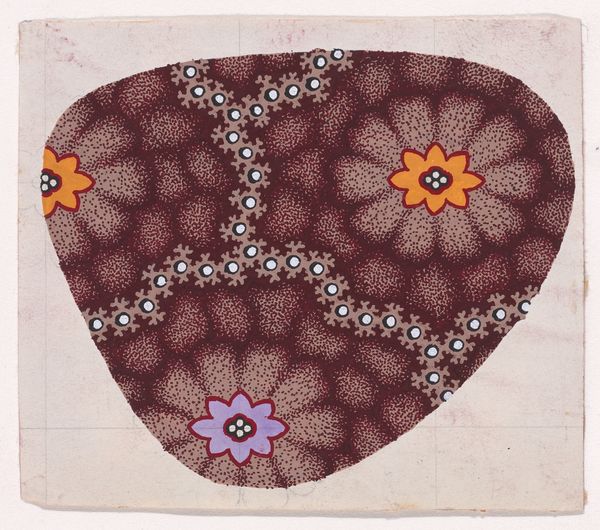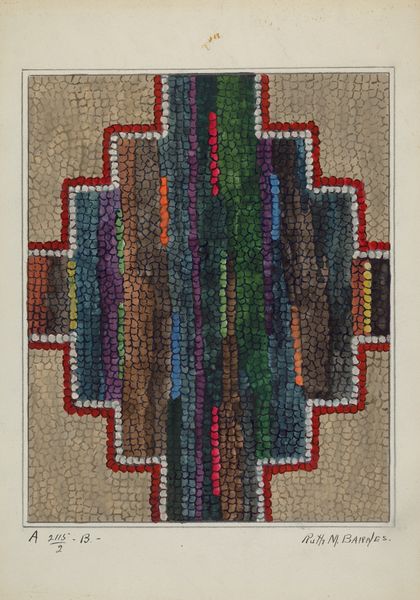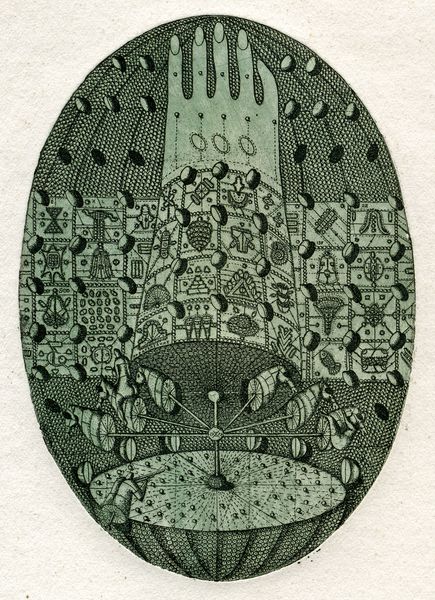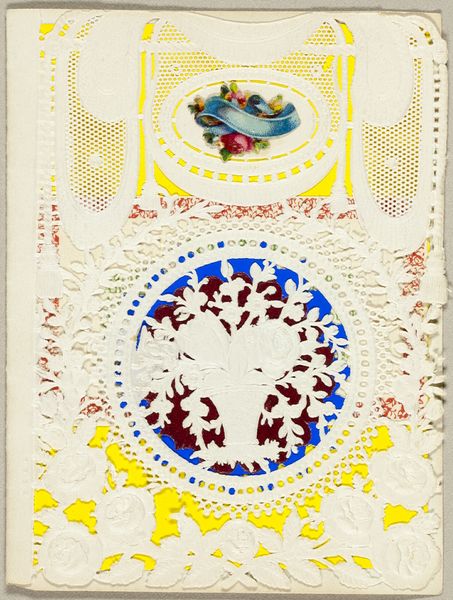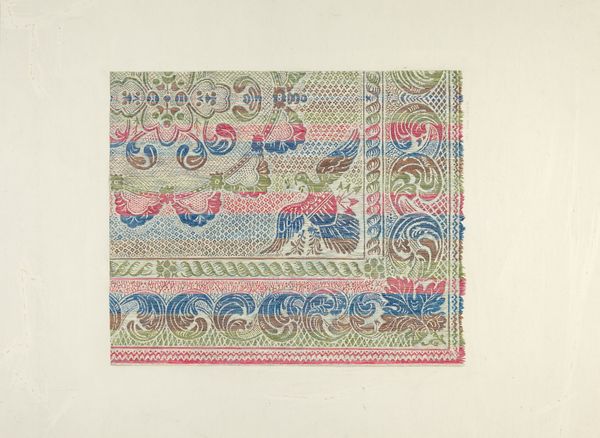
Copyright: Oleksandr Aksinin,Fair Use
Editor: This is "March," a 1980 ink drawing by Oleksandr Aksinin. There's an unsettling quality to it; the repeated patterns and the two figures, they feel very deliberately constructed. What do you see when you look at it? Curator: I immediately consider the materials at hand. Aksinin, working in 1980, used ink—a relatively accessible, even quotidian medium. Was this a deliberate choice? Considering the social and political climate of the Soviet Union at the time, the limitations placed on artists' materials become very significant. Perhaps Aksinin embraced this accessible material to maintain autonomy in his artistic process. How does the meticulous nature of the geometric shapes and the careful hatching contribute to a sense of restricted freedom, a sort of aesthetic labor? Editor: That's interesting. It looks very intricate but you are thinking about the access and availability of materials. How does that then shape your interpretation of the imagery? Curator: Well, look at the way he’s built up the image, layer upon layer. Ink allows for that delicate build-up, for intense detail. That density suggests a kind of cloistered artistic practice, a retreating into meticulous work as a form of silent resistance, maybe? The frame around the central image almost resembles textile work – a pattern endlessly repeated. Editor: It does remind me of textile production, weaving or embroidery. That repetition and geometric shapes now seem so different, in a completely different light than just style. Curator: Exactly! Think about folk art and traditional crafts. Are there ways that the ‘low’ art form creeps into, subverts even, the ‘high’ art form? What were the implications of blurring those boundaries in his particular time and place? Editor: I hadn't considered the constraints placed on artists or the potential subversiveness of medium and process. Thanks, it’s a completely new lens for me to view this through. Curator: Considering the artist's circumstances really deepens the work's resonance, doesn't it?
Comments
No comments
Be the first to comment and join the conversation on the ultimate creative platform.
